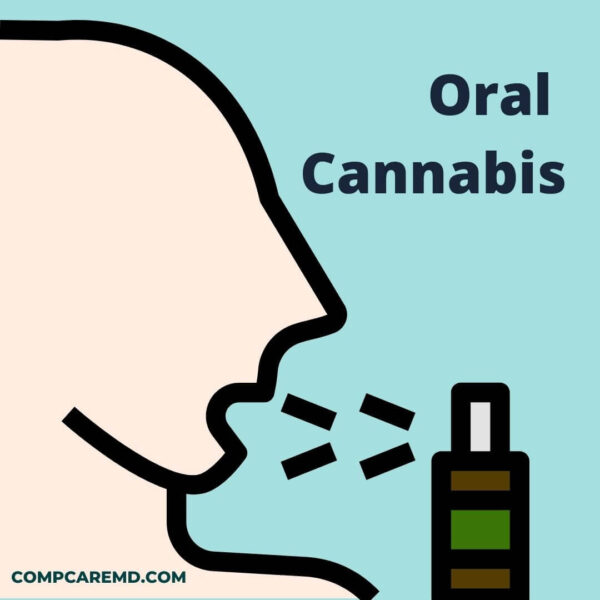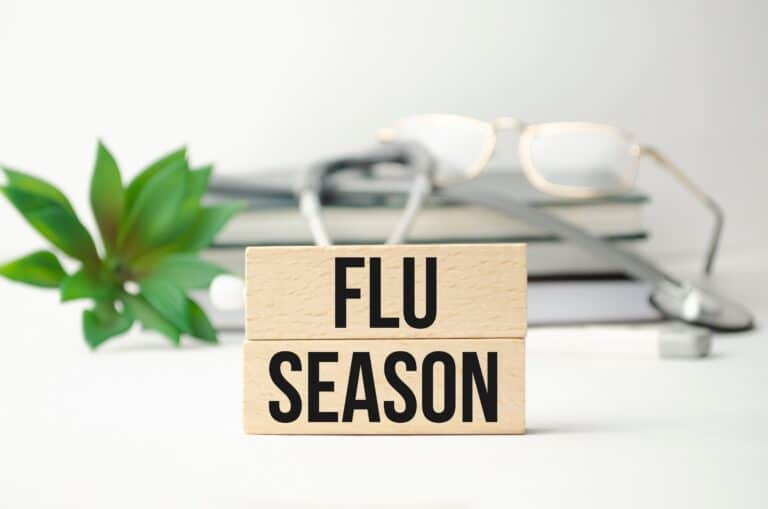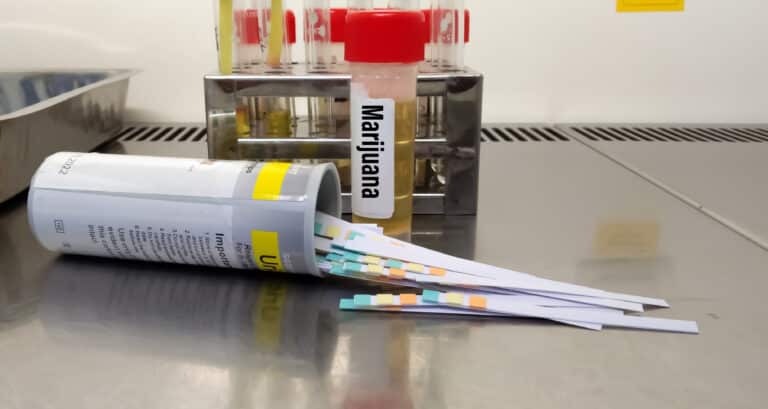https://compcaremd.com/wp-content/uploads/2022/07/1-2-e1658185755837.jpg
The use of cannabis for purposes other than recreational ones has become more common in recent years, emerging as a medicinal treatment to relieve pain, anxiety, and depression among others. However, the use for recreational purposes has also increased. Cannabis became legal for recreational purposes in January 2020 and there has been a steady increase in the business locally since then.
https://compcaremd.com/wp-content/uploads/2022/07/Screen-Shot-2022-07-18-at-6.43.48-PM.png
Cannabis can have both positive and negative effects on your oral health, in its many forms marijuana, hash, hash oil, and concentrates but all of them contain delta-9-tetrahydrocannabinol (THC), which is responsible for the psychoactive effects on the body. Although it is most commonly smoked, cannabis can be added to foods and made into topical creams, liquids, spray, and oils.
Aside from cannabis, edible products can be derived from hemp in the form of cannabidiol (phytocannabinoids) or CBD. There are three types of CBD edibles – full spectrum CBD, broad-spectrum CBD, and CBD isolate. Hemp products and cannabis products are not the same and they produce different effects and responses. Positive ones include controlled hunger and appetite, which patients undergoing chemotherapy and HIV-positive patients who experience “wasting” involuntary loss of more than 10% of their body weight successfully experience.
Positive effects of cannabis use:
- Controlled hunger and appetite
- Pain relief
- Reduction of asthma attacks
- Reduced glaucoma
- Relaxation and euphoria
Negative effects of cannabis use:
- Disorientation
- Weakened perception
- Possible increased risk of caries and periodontal disease
- Increased risk of inflammation associated with oral mucositis
- Dry mouth
The difference in effects could be due to changes in the oral micro biome. For example, a change in the oral micro biome could cause a reduction in nitric oxide. Oral mucosa and teeth cell receptors are also likely to respond to microbe metabolites and metabolic products from cannabis, triggering tooth pain and inflammation.
Differences can also depend on cannabis compositions, especially if they contain chemical carcinogens because of an increased risk for pre-cancers and oral cancers of the tongue and floor of the mouth.
Cannabis as a medical treatment can still yield positive results, and it is important to monitor symptoms after using cannabis in any form. More importantly, it is pertinent to keep your dentist informed regarding your cannabis use so they can recommend the proper care to maintain strong oral health.
What is a CBD oral spray?
CBD products are available in many forms, including oral sprays.
Sprays involve a tincture of CBD extract and ethanol alcohol. The alcohol helps extract the cannabinoids. An oral spray dispenses directly into the mouth, either under the tongue or inside the cheek.
Cannabidiol (CBD) is an increasingly popular ingredient for people seeking alternative remedies for various conditions, including chronic pain. CBD comes in the form of oral sprays, as well as edibles and topical products and Cannabis plants contain compounds called cannabinoids. The two best-known cannabinoids are tetrahydrocannabinol (THC) and CBD.
THC can lead to psychological effects and the “high” that people frequently associate with cannabis. CBD, however, does not produce the same psychoactive effects. It might, on the other hand, have numerous potential health benefits.
Various forms of CBD exist, including oils, gummies, topical, and oral sprays. However, it is important to note that availability may vary Trusted Source from state to state, and that it is currently illegal to sell CBD food products or dietary supplements. People can learn more about the regulation of CBD products.
Potential benefits
Although the research into CBD’s use as a remedy for various conditions is ongoing, studies that support CBD’s purported benefits are currently limited.
The following conditions may benefit from CBD use.
Anxiety
There are anecdotal reports of people who use CBD experiencing anxiety-reducing effects. CBD may also help Trusted Source counteract the anxiety-producing effects linked to high levels of THC.
However, existing studies into the effects of CBD on anxiety involve only small groups of participants. Further research may help clarify the potential link between the two.
Chronic pain
There is evidence to suggest that cannabinoids may help with pain relief, but few studies exist on CBD specifically. The authors suggest that there is moderate evidence pointing to the pain-relieving effects of cannabinoids compared with a placebo. However, people using cannabinoids were also more likely to experience adverse effects than those taking the placebo.
How does oral spray compare with other forms of CBD?
Although CBD oral sprays need longer to take effect than smoking or vaping, they are faster-acting than edible forms of CBD. Oral sprays can have an unpleasant aftertaste, but some have flavorings to make them more palatable.
When using CBD oral spray, it can be challenging to determine the correct dose. As with any form of cannabinoid, it is best to start small to prevent unpleasant side effects.
Oral sprays such as Epidiolex are standardized to meet formulation and dosage regulations. With these, a person will know exactly how much they are getting with each spray.
However, the effects of oral sprays may last longer and be stronger than with vaping or smoking.
Risks and side effects
Researchers still have a limited understanding of how CBD affects the human body.
Risks and side effects are possible Trusted Source, even in the case of the FDA-approved drug Epidiolex.
Some potential adverse effects of CBD include:
- Liver damage
- Drug interactions
- An increased risk of sedation (when a person combines CBD with alcohol or certain medications)
- Decreased appetite
- Diarrhea
- Altered alertness
Oral Cannabis and THC and other Routes of Administration
Recreational cannabis is mainly consumed by smoking, which involves combusting the herbal cannabis present in a joint, blunt, pipe, bubbler, or bong/water pipe, among other forms.
The psychoactive effects of THC appear in less than a minute after consumption. From the limited evidence available, it appears that smoking cannabis may be associated with respiratory diseases, as smoked cannabis contains several toxins and carcinogens also found in tobacco smoke. No country that has authorized the medical use of cannabis recommends smoking as a method of consumption.
An alternative inhalation-based form that has become popular in recent years is using a vaporizer. This technique is considered less noxious than regular smoking, as vaporizing does not produce the paralytic compounds derived from the combustion of the dried herb or extract, such as polycyclic aromatic hydrocarbons.
However, vaporizers have been recently associated with acute respiratory illness, now referred to as e-cigarette or vaping product-use-associated lung injury.
The cause of this condition is currently under investigation, although there is evidence implicating the vitamin E acetate used as diluents in vaporizer liquids.
Changes in cannabis legalization in several countries have influenced the emergence of a variety of edible products containing cannabis, which have increasing popularity. At present, edible products are now available in new formats resembling sugary snacks (hard and soft candies) and baked goods (brownies, cookies), which appeal especially to young people.
From a therapeutic perspective, oral cannabis intake is promising due to its long-lasting drug effects, easy administration, and reduced toxicity derived from paralytic by-products. To date, the limited information available describes a slow and erratic absorption, seemingly showing higher bioavailability in oil formulations.
Oral Cannabis Preparations
Medical cannabis refers to a broad range of products and preparations that contain cannabis and cannabinoids for therapeutic purposes.
Several medical products with marketing authorization contain THC as their main component, including Dronabinol (synthetic THC), commercialized as oral capsules (Marinol) or as an oral solution (Syndros), and nabilone (a synthetic THC analog), which is marketed as oral capsules (Cesamet or Canemes).
Formulations derived from the Cannabis sativa plant that do not have marketing authorization for medical use are known as “cannabis preparations”.
This term encompasses raw cannabis, compound preparations, and standardized cannabis preparations, which include cannabis flowers, granulates, and oil extracts.
Edible cannabis is associated with a high rate of emergency department visits, mainly due to gastrointestinal symptoms, intoxication, and psychiatric effects. The high variability of oral THC absorption and the delayed onset of effects can lead to the overconsumption of edible preparations, especially among naive users.
Oral Effects of Cannabis Use
The use of cannabis, particularly marijuana smoking, has been associated with poor quality of oral health but the etiology has been complicated by the number of associated factors with frequent users, including concomitant use of tobacco, alcohol, and other drugs; poor oral hygiene practices; and infrequent visits to dentists. It also leads to xerostomia (dry mouth), which can contribute to a number of oral health conditions.
Further, the main psychotropic agent, THC, is an appetite stimulant, which often leads users to consume cryogenic snack foods.10, 59 Regular cannabis users are known to have significantly higher numbers of caries than nonusers, particularly on normally easy-to-reach smooth surfaces.
Leukoedema is more common among cannabis users than non-users but it is unclear whether associated irritants, such as orally inhaled smoke, rather than cannabis itself, may be contributing causes.
Smoking marijuana is associated with gingival enlargement, erythroplakia, and chronic inflammation of the oral mucosa with hyperkeratosis and leukoplakia, sometimes referred to as “cannabis stomatitis,” which can develop into malignant neoplasias.
Copyright © 2024 Medical Marijuana Doctor - MMJ Doctor Near Me
Site by CannaPlanners




